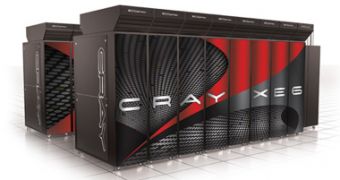Although in the past the distinction between the supercomputer and the high-performance server market has been extremely clear, it now seems like the line between these types of systems is as thin as it gets and analysts expect that the two will meld in the not-so-distant future.
According to EETimes, this trend has now become even more obvious as some machines, such as IBM's Watson server cluster which beat human champions on the quiz show Jeopardy last month, are used to run applications that just a few years ago would have been reserved for supercomputers.
This is possible, since advancements in technology have allowed companies to combine servers, that feature high-speed interconnects and graphics processors tuned to specific applications, with specially designed software that can deliver supercomputer performance from such machines.
“HP is not building proprietary supercomputers, but using industry standard servers and graphics co-processors," said Marc Hamilton, HP lead for high performance computing in the Americas.
“Whether you call it a cluster computer, a supercomputer or a high-performance computing system, today everything is being simulating on them before it is built—whether it's a new airplane, a car design or the antenna for a new cell phone,” continued the company's rep.
A major advantage that clustered servers hold over supercomputers is the reduced time to market required by such machines as these are built using industry standard components like x86 processors and Nvidia Tesla graphics co-processors.
“The biggest barrier to the growth of HPC is a combination of affordability, power consumption and the complexity of putting together such very, very large computer systems," said Ed Turkel, HP's worldwide marketing lead for high performance computing.
“By breaking through those barriers, we hope to increase levels of performance with industry standards by adding the specific components needed to give our systems a competitive advantage.”

 14 DAY TRIAL //
14 DAY TRIAL //